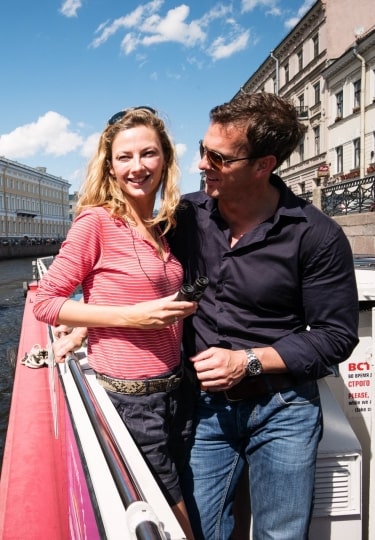There are so many things to do in St. Petersburg, Russia’s dazzling cultural capital, that visitors are truly spoilt for choice. The city is packed with historic palaces and churches, amazing art collections and extraordinary architecture. Even if you’ve visited before, you’ll always find something different to explore.
Sometimes called the “Venice of the North”, St. Petersburg is set on the Neva River and ringed by an intricate network of tributaries and canals. It was founded by Peter the Great in 1703 to rival Europe’s grandest cities and over the past 300-plus years has been the seat of the Imperial Court of the Russian Tsars and the centre of the 1917 Russian Revolution.
Today, St. Petersburg’s main tourist attractions reveal its long and often bloody history, as well as fascinating glimpses into the daily lives of “Piter’s” citizens.
Here are 13 of the best things to do in St. Petersburg, Russia.
Embark on a River Cruise
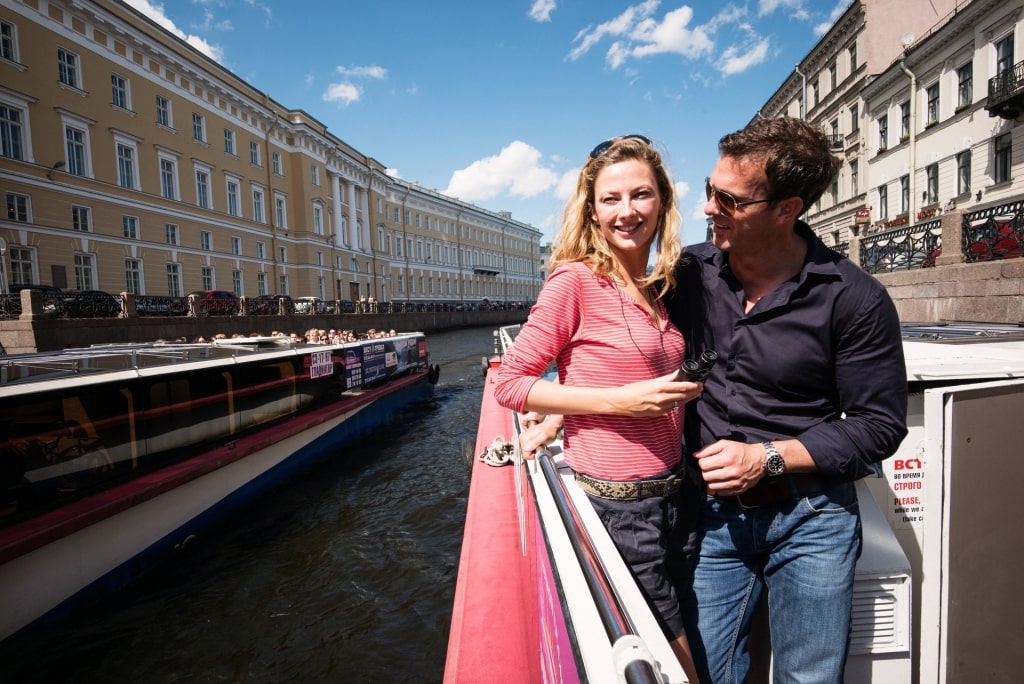
River cruise
One of the most enjoyable ways to see St. Petersburg’s main tourist attractions is from the water. A scenic river cruise takes you past fabulous palaces, gracious mansions, lush gardens and an astounding number of churches and cathedrals.
As your boat navigates the waterways and dozens of bridges en route, the audio narration gives you an insight into how the city has developed since its foundation by Peter the Great.
Among the landmark sites you’ll see—and can explore later—are St. Isaac’s Cathedral, noted for its magnificent golden dome; Peter the Great’s Summer Palace; the 19th-century Imperial School of Jurisprudence, where the famous composer Pyotr Tchaikovsky boarded as a young boy; and the Russian Orthodox Church of the Savior on Spilled Blood.
Different river cruise excursions include visits to Peter and Paul Fortress and the Fabergé Museum on their itineraries so you’ll need to choose what you’d like to see.
Explore Peter and Paul Fortress, Birthplace of St. Petersburg
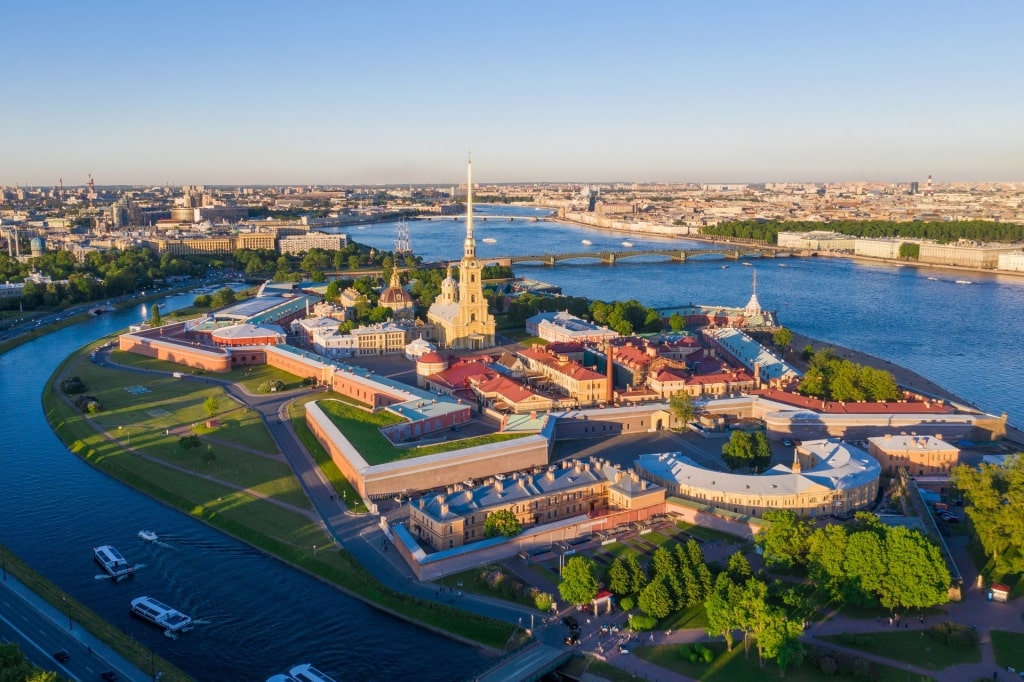
Peter and Paul Fortress
Set on St. Petersburg’s smallest island, Zayachy (Hare) Island, Peter and Paul Fortress was the city’s first building, constructed during the Great Northern War between the Russian and Swedish empires between 1701 and 1720.
The star-shaped fortress has served many purposes over the years, including as a military base, a collection of government departments, a scientific center and jail—but it has never been used for defense.
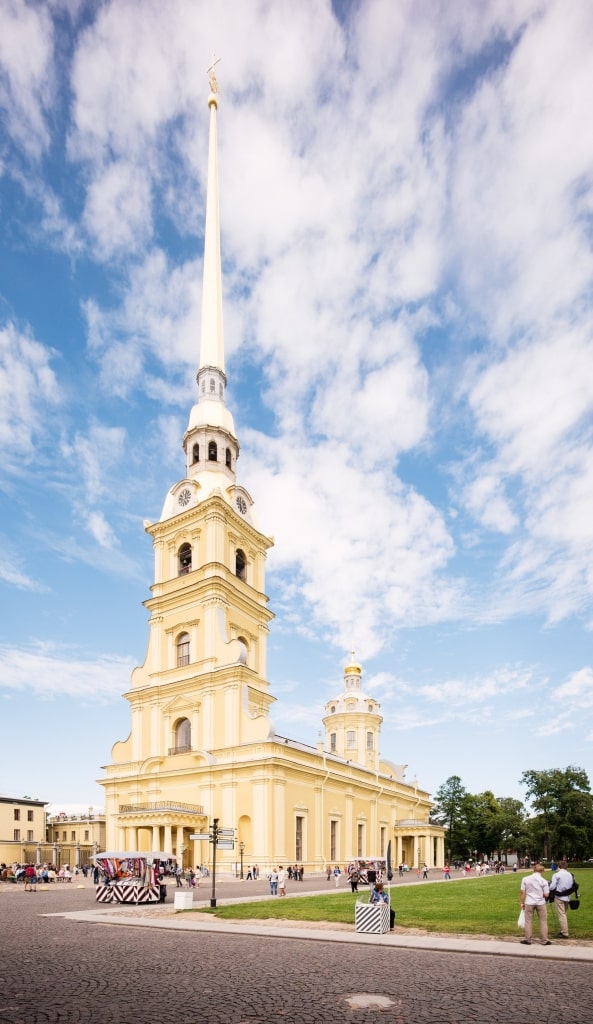
Peter and Paul Fortress
Within the walls of the fortress is the Cathedral of Saints Peter and Paul, the oldest church in St. Petersburg. You can’t mistake its distinctive needle-like spire; it was once the tallest structure in the city but at 1,500 feet, the new Lakhta Center’s tower is more than double its height.
Peter and Paul Fortress is the second-most popular of St. Petersburg’s main tourist attractions, after the State Hermitage Museum. As well as the cathedral, the fortress houses numerous exhibitions and museums, including the forbidding Trubetskoy Bastion Prison.
Be Dazzled by the Fabergé Collection
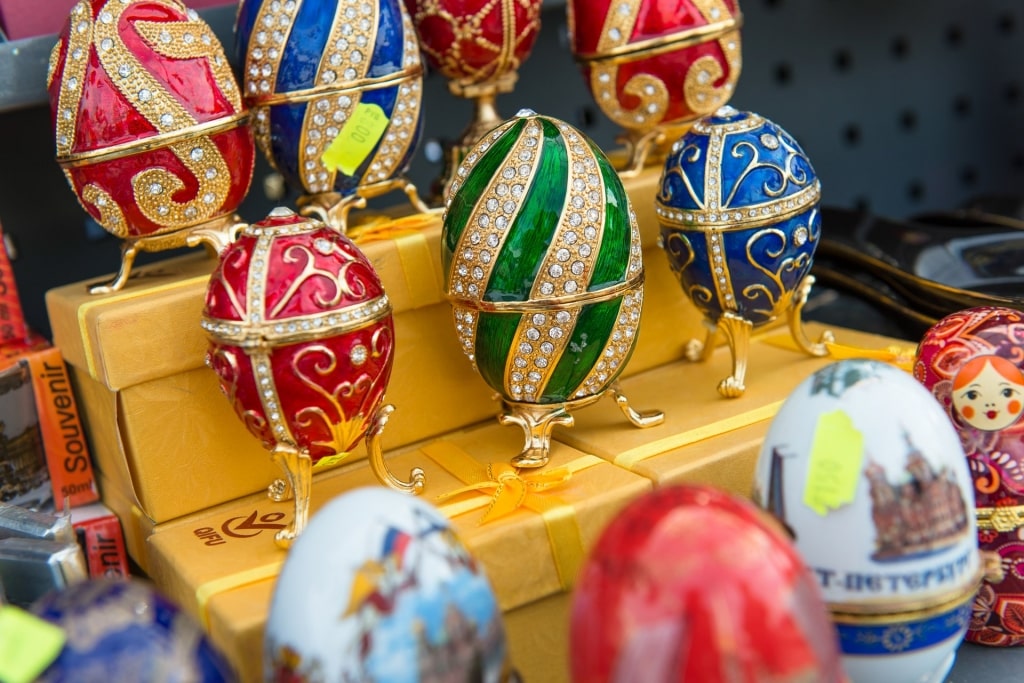
Fabergé Museum
The Fabergé Museum is home to the world’s largest collection of jewelry and decorative pieces created by the House of Fabergé, official jewelers to the Russian Imperial family from 1885 until the Russian Revolution in 1917. The museum was established in 2013 in the sumptuous waterfront Shuvalov Palace after the building underwent a seven-year restoration.
Some 4,000 exquisitely wrought artworks are displayed in 12 themed rooms. You can see nine of the fabled Fabergé eggs in the Blue Room, including the first egg that Fabergé created for Tsar Alexander III in 1885. Alexander III gave the egg to his wife, Empress Maria Fedorovna, for Easter, starting an Imperial tradition.
The Kremlin Armory in Moscow is the only other place in the world that holds more Fabergé eggs than the Fabergé Museum—to be exact, just one more.
Take a Tour of the State Hermitage Museum
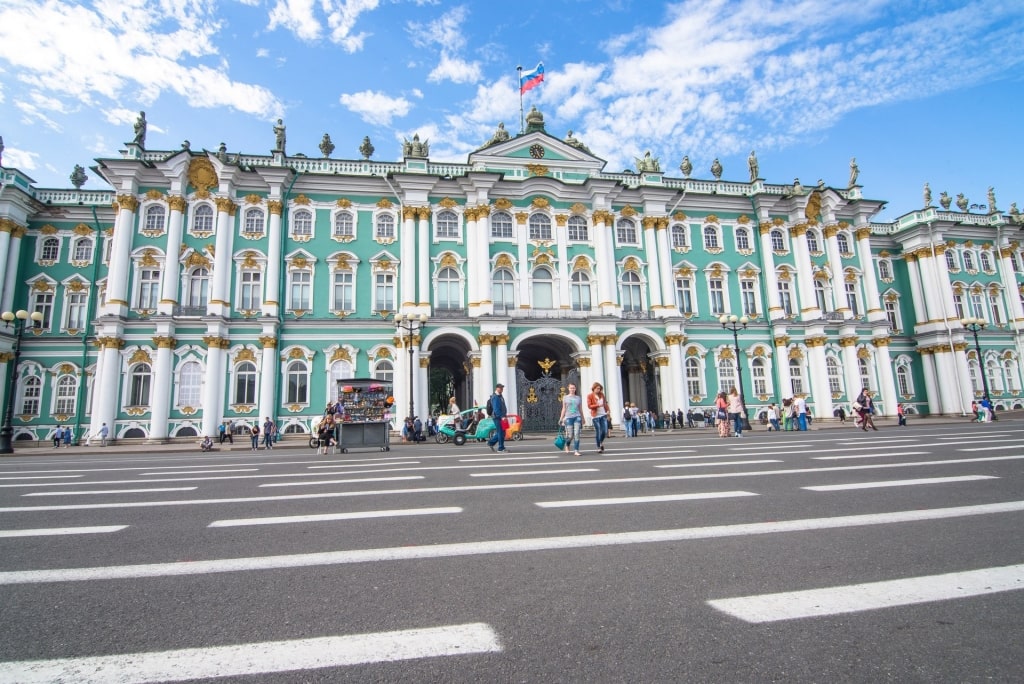
State Hermitage Museum
It’s been estimated that it would take 11 years to view every one of the Hermitage’s three million-plus artworks for just one minute each, so unless you know exactly what you want to see, a guided tour is highly recommended.
A four-hour tour that includes a visit to the breathtaking Gold Room reveals some of the major highlights of the vast Hermitage collection. Most of the artworks are displayed in a complex comprising the Winter Palace and four other connected historic buildings.
Paintings on this tour include works by Italian, Dutch and Flemish masters such as Leonardo da Vinci, Titian, Rembrandt and van Dyck. You’ll also see exhibitions of antique ceramics, porcelain, furniture and silverware. The Gold Room houses an extraordinary collection of gold and silver jewelry and artefacts, some dating back to 4000 BC.
Go Modern at Erarta Museum
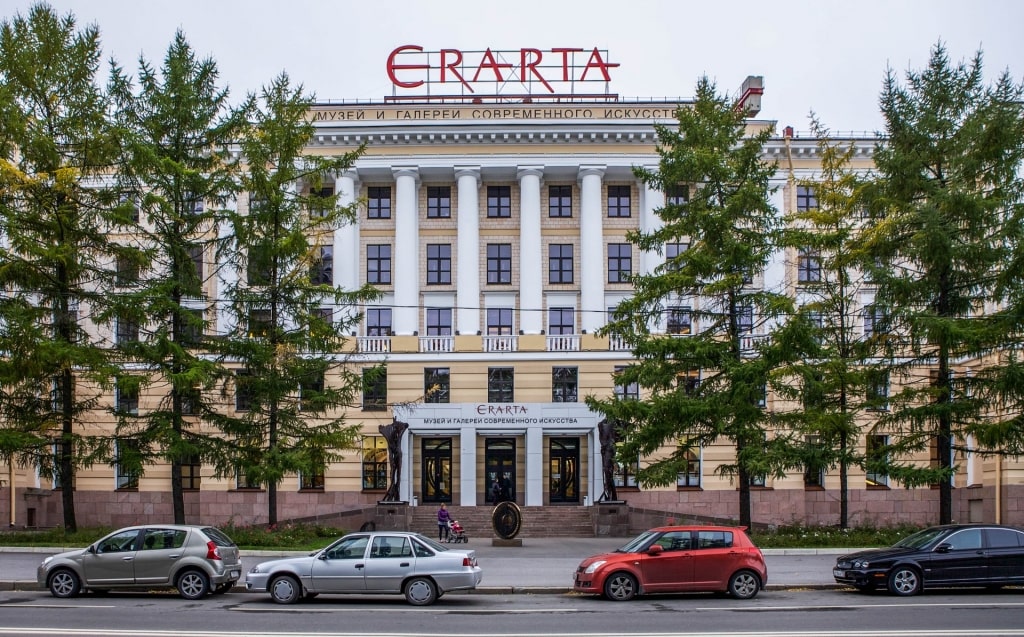
Erarta Museum Photo by Ninara on Flickr, licensed under CC BY 2.0
For a more modern take on Russia’s art and culture, check out the country’s largest private museum of contemporary Russian art at the Erarta Museum. Established in 2010, the collection showcases more than 2,800 works created by some 300 artists from 20 regions of Russia.
One of the best museums in St. Petersburg, it’s set over five floors in a neoclassical Stalinist building. One wing is dedicated to temporary exhibitions that change every three months. Permanent exhibitions, which are added to constantly, include paintings, sculptures, installations, graphics, audio-works and animation.
Erarta’s shop sells a wide range of prints, original paintings, books and unusual souvenirs that make great gifts for friends and family back home. There’s also a sophisticated restaurant for that well-deserved lunch break.
Revel in Yusupov Palace’s History
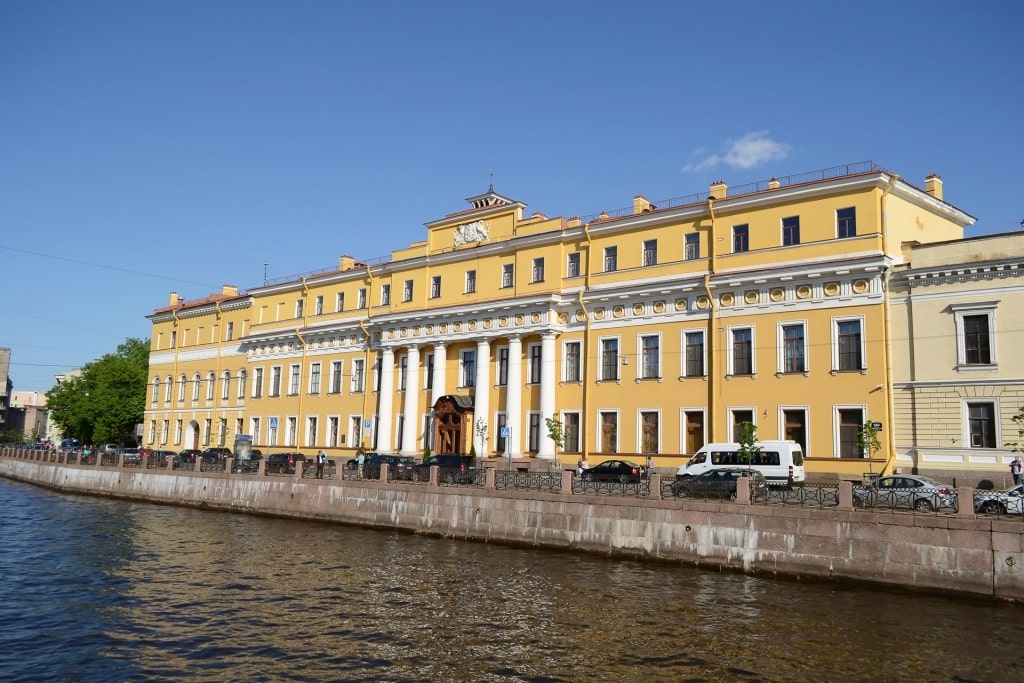
Yusupov Palace
St. Petersburg is awash with Imperial palaces but Yusopov has a particularly intriguing history. Built in the 1770s on the Moyka River, the palace was bought by Prince Nikolay Borisovich Yusupov in 1830 and stayed in the enormously wealthy Yusupov family until it was captured by the Bolsheviks in 1917.
While it is one of the few city palaces of that era to retain its original interiors—and they are eye-poppingly lavish—Yusupov is best known as the place where Grigory Rasputin was assassinated in 1916. Rasputin was the notorious “Mad Monk” who allegedly cured the haemophiliac son of the last Romanovs, Tsar Nicholas II and Tsarina Alexandra Feodorovna.
Many colorful legends surround the assassination, for which Prince Felix Yusupov claimed credit. Today, you can visit the basement where the murderous plot unfolded, but the palace offers plenty of other architectural and decorative features that exemplify the unbelievably extravagant lifestyles of the pre-Revolutionary Russian aristocracy.
Wander the Gilded Halls of Catherine Palace
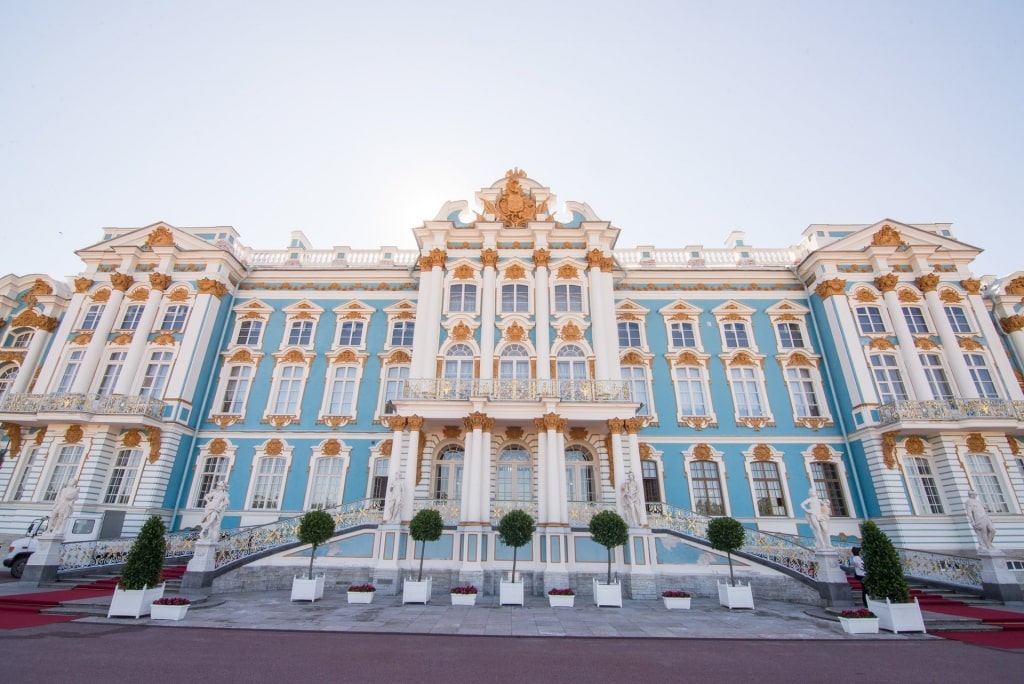
Catherine Palace
When you first set eyes on the monumental azure, white and gold Catherine Palace and its expansive manicured parklands, it’s hard to imagine that it started out as a two-story country home. It was originally built for Catherine I, the wife of Peter the Great, as a summer residence in the village of Tsarskoe Selo.
Their daughter, Empress Elizabeth, commissioned Imperial Court architect Bartholomeo Rastrelli to undertake a massive redesign of the house and grounds in the 1740s, bringing it up to the standards of European palaces such as Versailles.
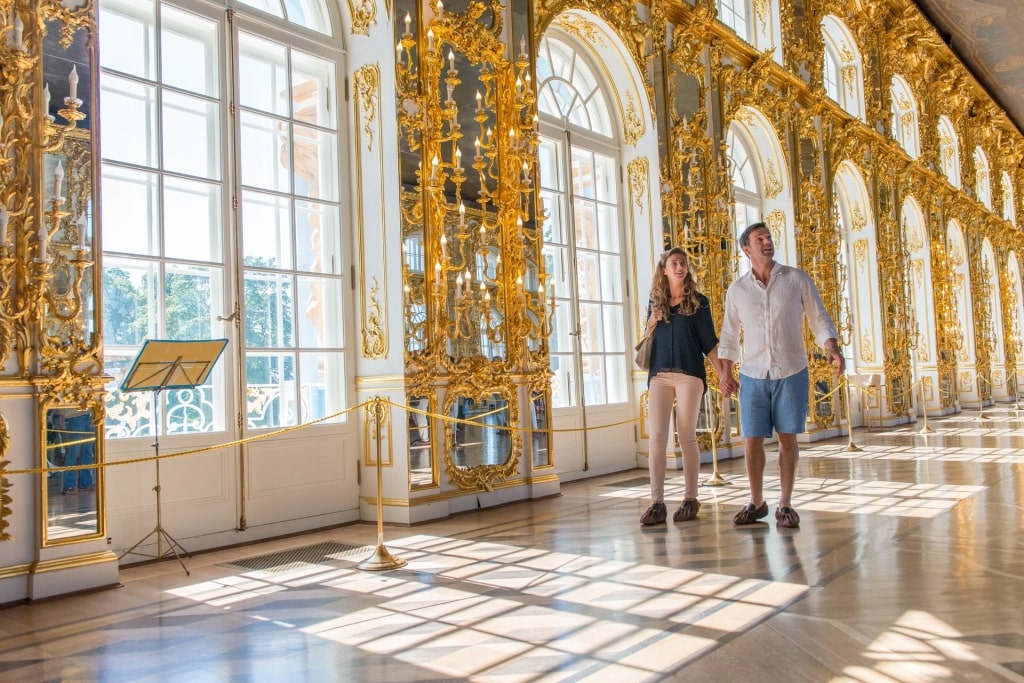
Catherine Palace
When Catherine II (Catherine the Great) ruled Russia between 1762 and 1796, she further embellished this grand establishment and it was used as a summer palace by the Romanovs until the Revolution.
It was almost destroyed during World War II but a team of experts spent years on its restoration; don’t miss the exhibition that depicts this herculean effort. The Amber Room is the most famous of the many opulent, gilded halls you can wander through on a half-day guided tour.
Marvel at the Mosaics in Savior on Spilled Blood
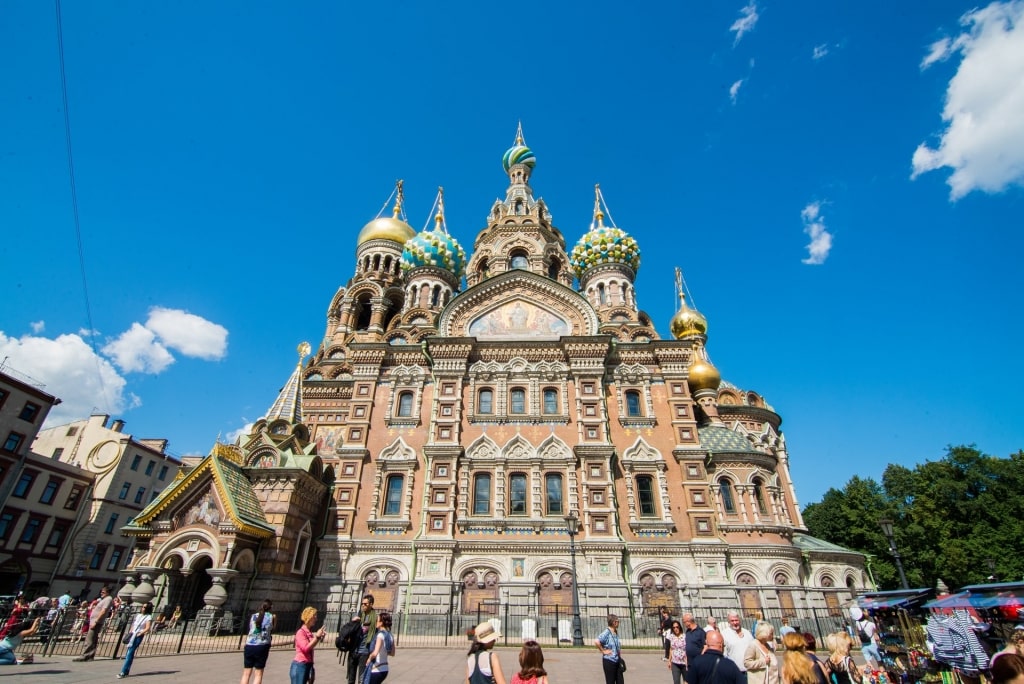
Church of Our Savior on Spilled Blood
Built between 1883 and 1907, the Church of Our Savior on Spilled Blood commemorates the place where Emperor Alexander II was assassinated by revolutionaries in March 1881. It is the only significant historic site in St. Petersburg that was designed in the Russian Byzantine style—most of the architecture you’ll see is neoclassical or baroque.
The multi-domed edifice sits on the Griboedov (Catherine) Canal and while its colorful, ornate exterior is absolutely spectacular—it’s similar to St. Basil’s Cathedral in Moscow—the mosaics decorating the interiors are what make the church one of St. Petersburg’s main tourist attractions.
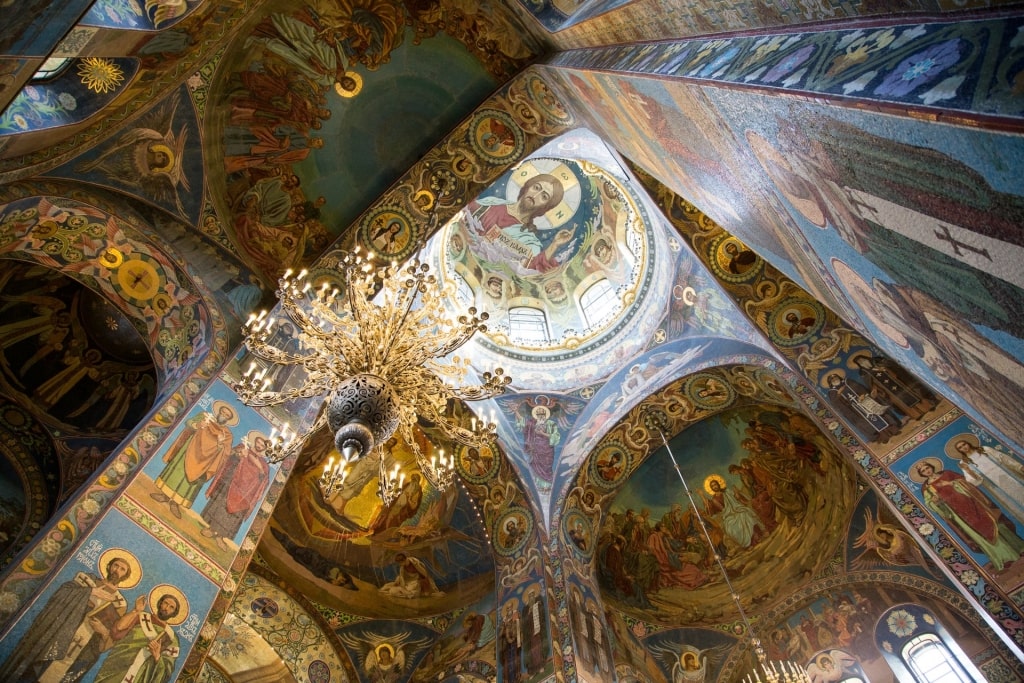
Church of Our Savior on Spilled Blood
More than 80,000 square feet of finely detailed mosaics cover the walls and ceilings, mostly depicting Biblical scenes and figures. Several renowned artists of the day were commissioned by the Russian royal family to create this multitude of masterpieces.
Savior on Spilled Blood stopped functioning as an active church in the 1930s and was slated for demolition several times. Fortunately, it was saved and then lovingly restored over nearly 30 years, re-opening in 1997.
Climb St. Isaac’s Cathedral Tower
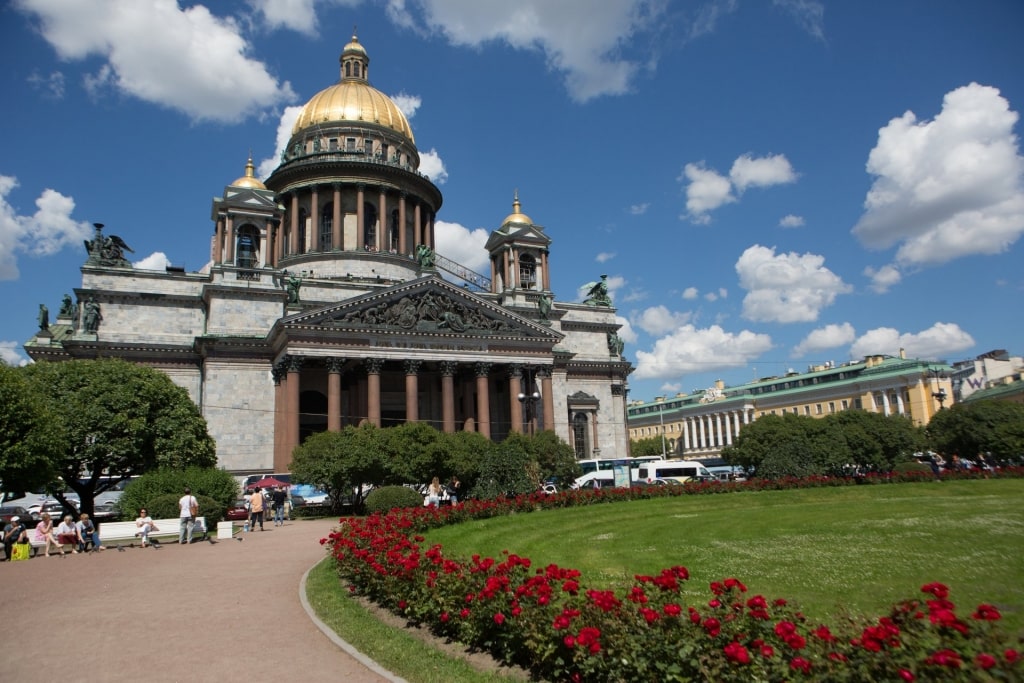
St. Isaac’s Cathedral
If you’re feeling fit, one of the best things to do in St. Petersburg is walk up 200-plus narrow steps to the dome of St. Isaac’s Cathedral, to take in glorious panoramic views of the city, the River Neva and all the landmark sites.
St. Isaac’s is the largest Orthodox cathedral in St. Petersburg and the observation deck in the colonnades, at the base of its instantly recognisable gold dome, is 140 feet high. Apart from the view, St. Isaac’s is recognised as an architectural and engineering marvel.
Constructed between 1818 and 1858, the cathedral’s exterior features huge columns made from single pieces of red granite that engineers raised before the walls were built. You can see a model of the ingenious framework they used inside the cathedral.
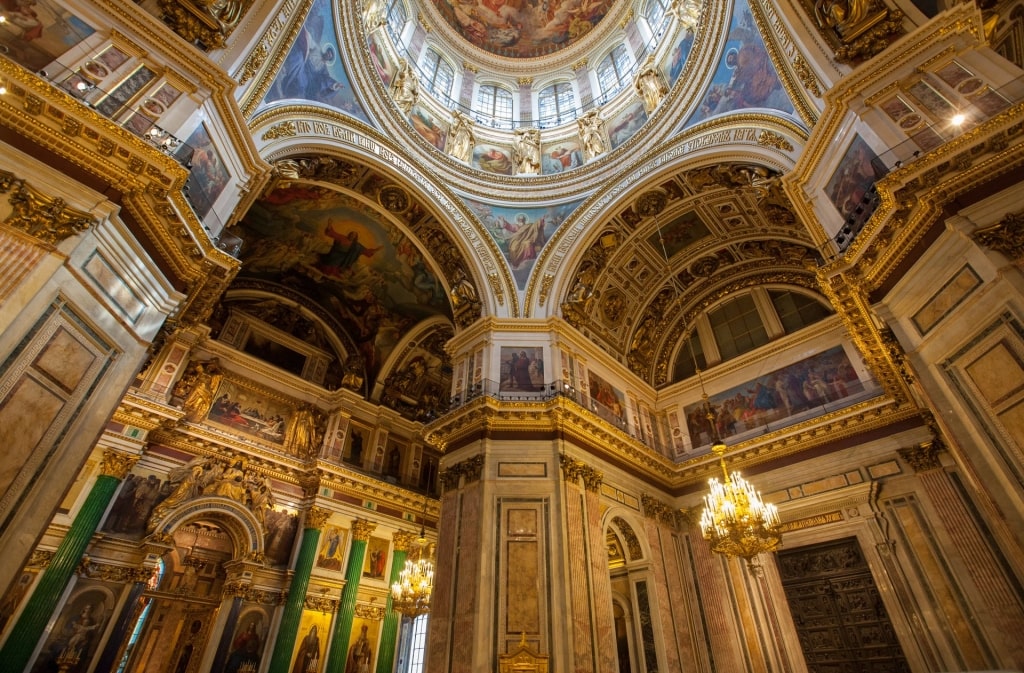
St. Isaac’s Cathedral
The interior walls and floors are marble, the iconostasis (icon wall) is decorated with lapis lazuli and malachite columns, and the walls are adorned by hundreds of mosaics, sculptures and paintings.
Shop Kuznechny Market
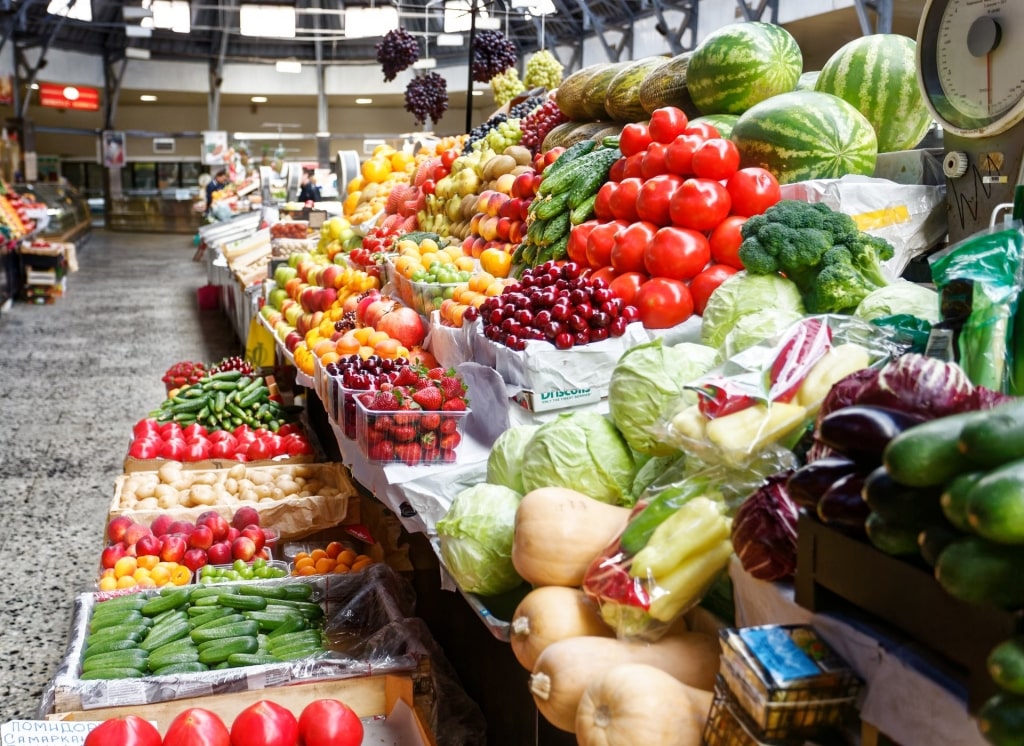
Kuznechny Market
Make sure you have some cash roubles if you plan to buy anything from this busy produce market—and be prepared to haggle. However, vendors will offer you tastes of their wares, which include an incredible range of honey, preserves, dried fruits, cheeses, pickles and baked goods along with fresh fruit and vegetables, meat and seafood. Caviar, anyone?
Kuznechny Market is located inside a large 1920s building in the central part of St. Petersburg and because it’s always busy with local shoppers, it’s a great way to experience a slice of daily life.
Sample Vodka and Blini
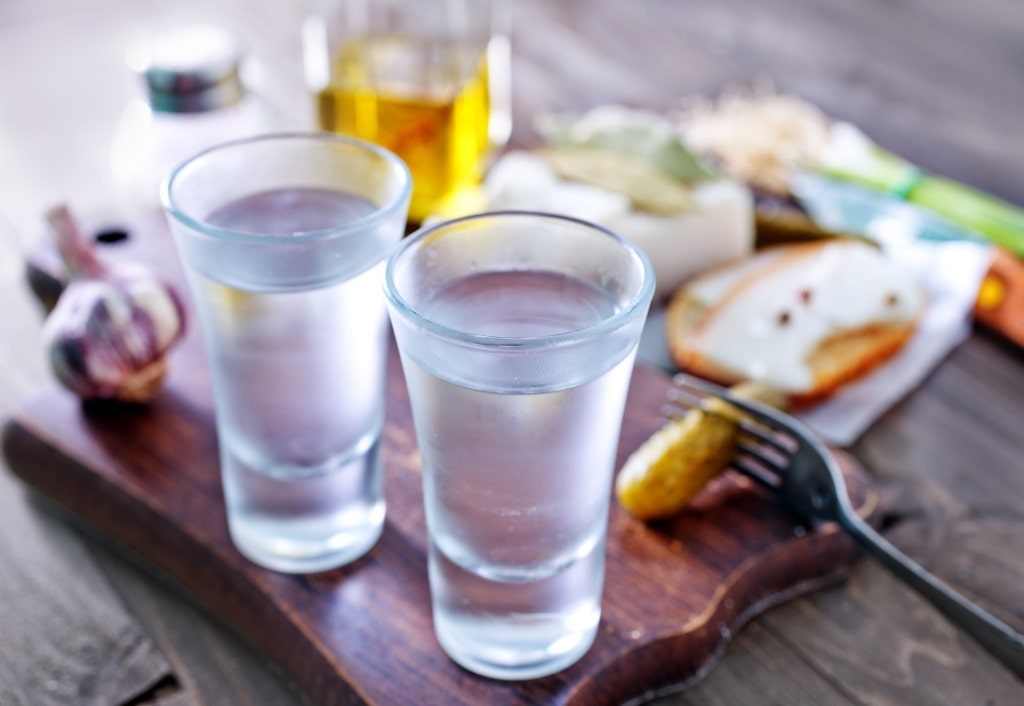
Vodka
Russians love their vodka and blini. Take a masterclass in a local culinary center and you’ll learn a lot about Russian culture, customs and the rituals surrounding the national drink while you’re taught how to prepare the classic pancake.
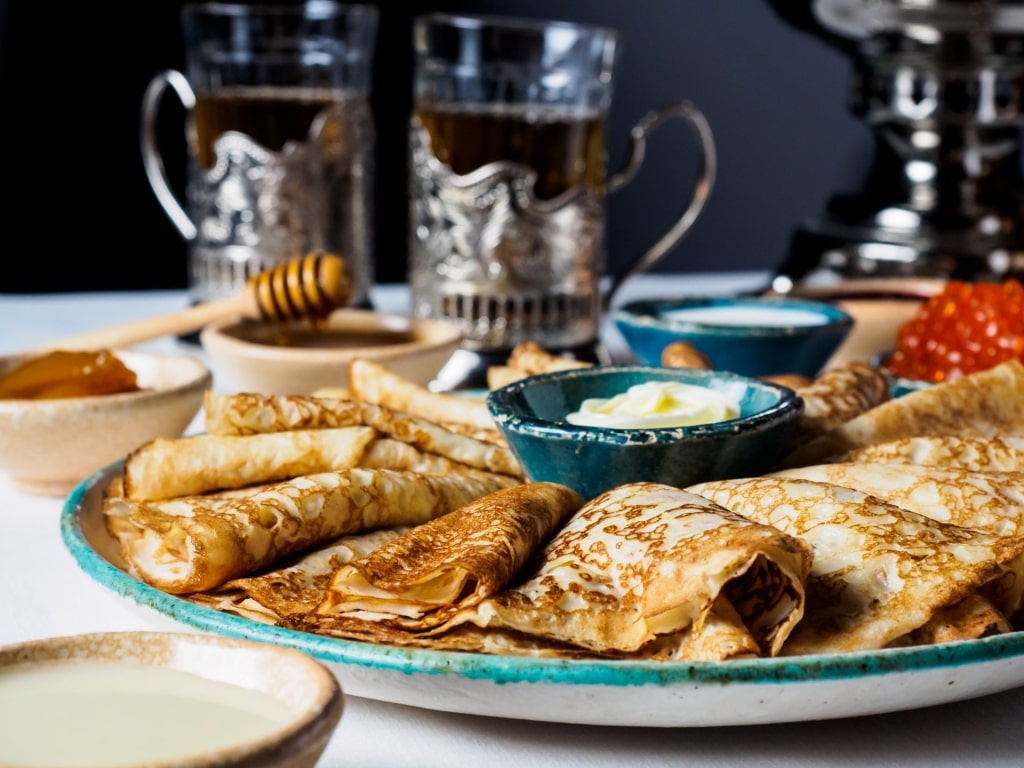
Blini
Recipes for blini dough vary widely, so you’ll be getting the lowdown from a genuine expert; they can be filled or topped with sweet or savoury mixtures and smetana (sour cream) is a key ingredient.
Hundreds of varieties of vodka are produced across Russia, including homemade “moonshine”—the grain-based spirit has been part of Russian culture since at least the 14th century. During the masterclass, you’ll sample a few during the tasting session and then put your mixology skills to the test and create delicious vodka cocktails.
Go to the Ballet
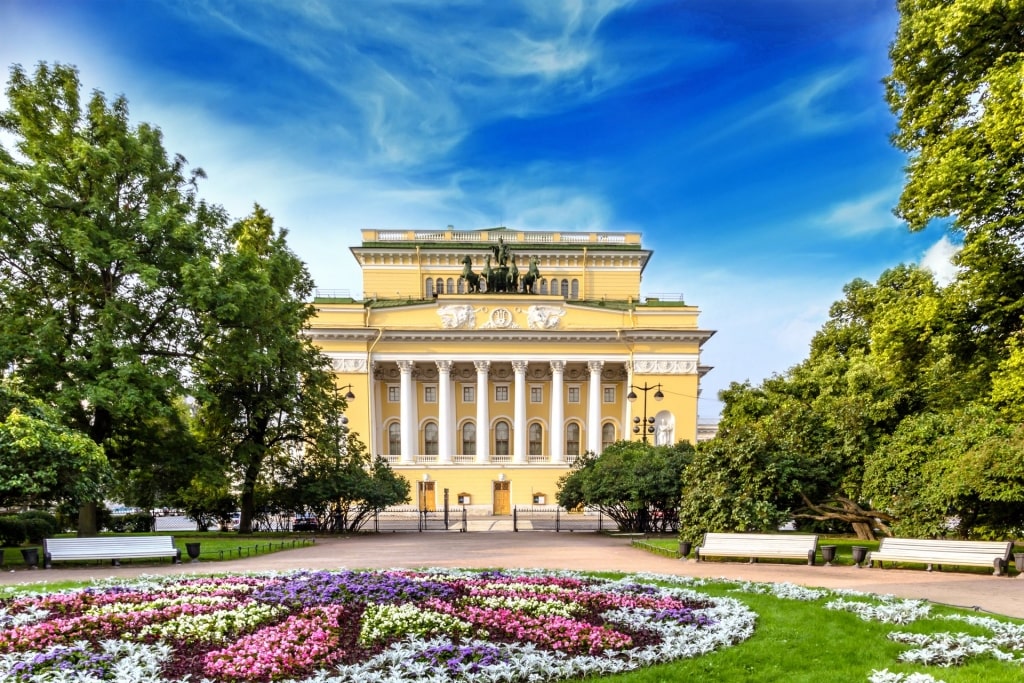
Alexandrinsky Theatre
Ballet has been an integral part of Russian culture since Peter the Great introduced it to the country in the 1700s. Empress Anna Ivanovna opened the St. Petersburg Imperial Ballet School in the Winter Palace in 1738 and since then, innumerable Russian schools and companies have produced some of the world’s most acclaimed ballet dancers.
Going to the ballet is one of the most rewarding things to do in St. Petersburg. Soak up the atmosphere inside the majestic Alexandrinsky Theatre while you enjoy a performance of one of the classics. The theater dates back to 1834, when it became home to the Russian State Drama Theatre, which itself was founded in 1756.
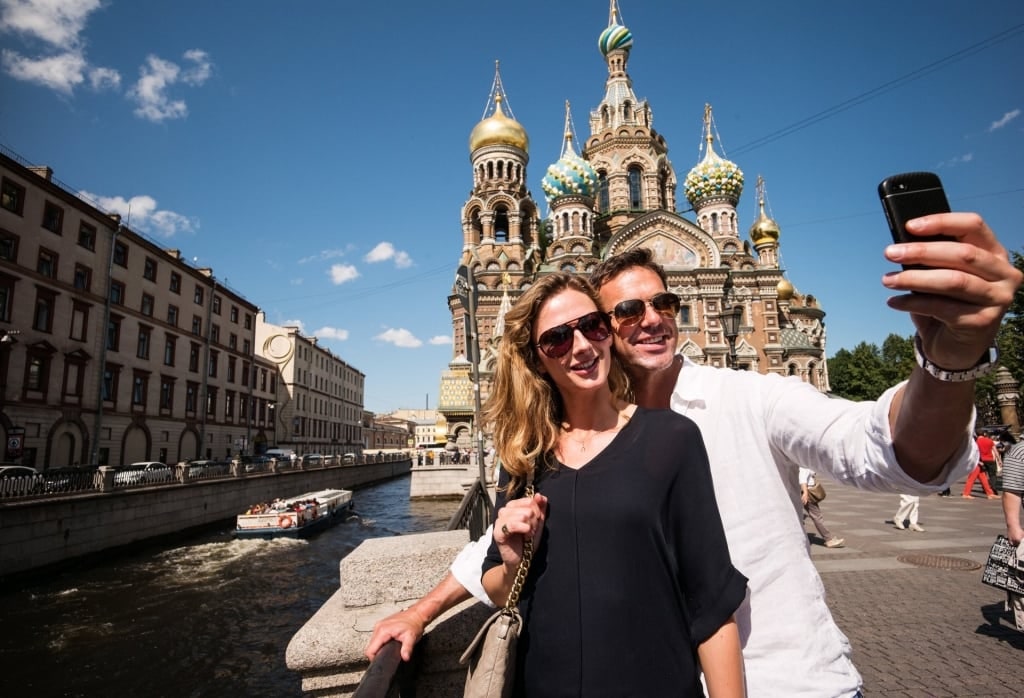
Church of Our Savior on Spilled Blood
Discover the awe-inspiring city of St. Petersburg on a cruise. Browse our cruises to St. Petersburg and plan an exciting vacation today.
